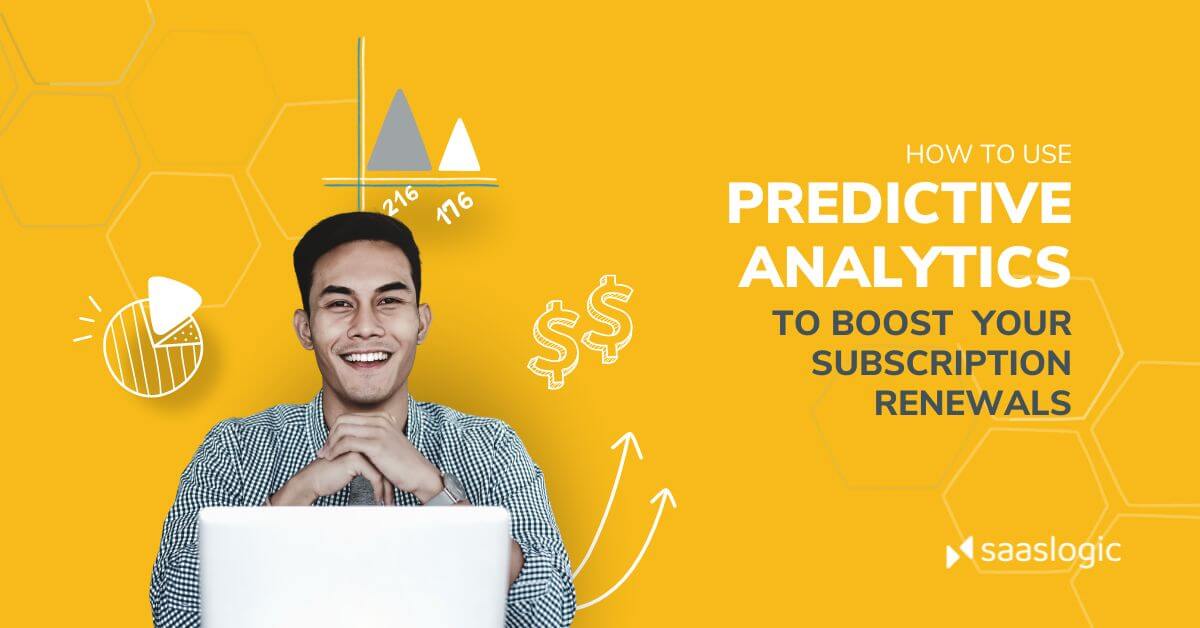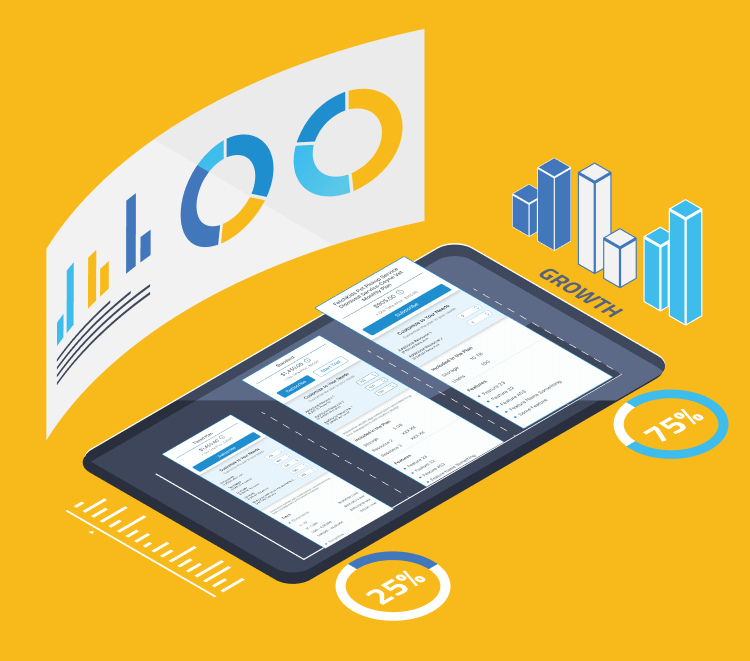Optimizing Subscriptions through Predictive Analytics

Why You Should Introduce Predictive Analytics Into Your Subscription Business
Here’s scenario A. You’ve just launched your new product and you have many customers lined up to subscribe for it. Good thing you already have a platform integrated to manage your subscriptions and billing. Things are going well and you’re getting a lot of good feedback from the market. But soon, things start to change. You’re customers are starting to leave. The ‘new subscription’ numbers are struggling to keep up with your churn, despite your marketing efforts, product upgrades, and offers. You realize there’s something wrong with the product and your team is somehow unable to pin-point the exact reason. The chances are you’d much sooner run out of your funding before you get to figure out how to make your app stick.
Now scenario B. You’re innovative application is ready for the market and your team is excited for the launch. But before you do, you decide to integrate with a subscription and revenue management software with built-in predictive analytics capabilities. As customers start subscribing to your product, you start getting real-time insights into their usage patterns, their pain points, and other feedback they have about your app. Artificial Intelligence (AI) is also able to map your app data with market trends and industry data to suggest the best features and UX for your product. Your team quickly jumps into action and addresses these issues to release version updates periodically. Your customers are much happier with the new features and now you have a dynamic process that can weather any change in plan.
Clearly, we all want to be in scenario B. The good news is, that a comprehensive subscription management solution with integrated predictive analytics is soon about to become a commercial reality.
This dynamic duo is causing quite a stir among subscription management teams, heralding a new era of forecasting. According to a recent report by Markets and Markets, the industry is set to skyrocket to $28.1 billion by 2026, showcasing its rapid adoption and highlighting its potential to revolutionize revenue forecasting.

As SaaS leaders and analytics experts continue to work together to build this game-changer solution, we’re going to see how such a platform can help the subscription industry.
In this blog post, let’s dive into the world of predictive analytics, why it’s a game-changer for sales forecasting, and how it’s reshaping the landscape of subscription revenue software.
Applying Predictive Analysis to a Subscription Management Platform
Predictive analysis offers subscription management organizations a powerful tool to forecast sales, optimize pricing strategies, mitigate churn, and identify new revenue opportunities. Let’s break down how predictive analysis can be applied to enhance various aspects of subscription management.
1. Collect historical data.
Start by gathering historical sales data from CRM systems, sales databases, and other relevant sources. Define key variables such as customer demographics, product categories, pricing information, and promotional activities. Consider the following steps:
Data Source Identification:
Identify sources such as CRM systems, billing platforms, and transaction databases to collect historical sales data.
Variable Definition:
Define variables such as customer demographics, subscription tiers, pricing plans, usage metrics, and promotional campaigns that are crucial for analysis.
Performance Metrics Determination:
Determine performance metrics such as total revenue, number of transactions, conversion rates, customer acquisition costs, and customer lifetime value (CLV).
2. Identify trends
Examine historical data patterns to discern sales trends, seasonality, and cyclic patterns. Utilize statistical methods and exploratory data analysis techniques to identify trends and visualize data patterns effectively. Consider:
Seasonal Pattern Identification:
Use time-series analysis to identify seasonal trends, peaks, and dips in sales data, considering factors like holidays, seasons, and weekdays vs. weekends.
Peak and Dip Period Analysis:
Identify peak and dip periods in sales using exploratory data analysis techniques, such as autocorrelation analysis, to understand dependencies between current and past sales.
3. Predictive Modeling Techniques:
Utilize predictive modeling techniques to forecast future sales, optimize pricing strategies, and predict changes in demand. Leverage machine learning algorithms, data mining techniques, and statistical modeling approaches to build predictive models.
Machine Learning for Sales Forecasting:
Train machine learning models, such as linear regression, decision trees, or neural networks, on historical sales data to predict future sales under specific conditions.
Dynamic Pricing Algorithms:
Implement dynamic pricing algorithms that adjust subscription prices based on changes in demand, utilizing reinforcement learning techniques to optimize pricing strategies in real-time.
Customer Segmentation for Pricing Optimization:
Use clustering algorithms to segment customers based on spending patterns, preferences, and behaviors, and apply regression analysis to understand price elasticity and optimize pricing based on elasticity measures.
4. Churn Risk Prediction:
Predict churn risk using survival analysis, machine learning models, and sentiment analysis techniques.
Survival Analysis for Churn Prediction:
Implement survival analysis techniques to model the time until a customer churns, considering factors such as usage patterns, customer interactions, and satisfaction scores.
Machine Learning Models for Churn Prediction:
Train machine learning models, such as logistic regression or random forests, on historical churn data, including features like customer engagement, support interactions, and product usage.
Sentiment Analysis for Churn Prediction:
Analyze customer feedback, reviews, and support tickets using sentiment analysis to identify indicators of dissatisfaction or potential churn, integrating sentiment analysis results into churn prediction models for a holistic approach.
5. Identify new customer segments:
Use market basket analysis, collaborative filtering, and customer segmentation techniques to identify new revenue opportunities.
Market basket analysis:
Use market basket analysis to identify associations between different products or services, uncovering potential cross-selling or upselling opportunities.
Collaborative Filtering:
Apply collaborative filtering techniques to recommend products or services based on similar customers’ preferences, identifying new customer segments by finding clusters of users with similar preferences.
The Future of Subscription Business With Predictive Analytics
From artificial intelligence to machine learning, and from data mining to statistical modeling, predictive analytics offers a plethora of tools to unlock insights, optimize strategies, and drive growth. With predictive analytics, subscription management teams can anticipate customer behavior, optimize pricing strategies, and identify new revenue opportunities like never before.
As we embrace this powerful combination, we step into a new era of forecasting—one marked by precision, agility, and innovation. With predictive analytics as our guide, the path to subscription success becomes clearer, and the journey more rewarding.
At saaslogic, let’s embark on this journey together, armed with the transformative power of predictive analytics, as we chart a course toward a future where every decision is informed, every strategy is optimized, and every subscription thrives. The future of subscription management is here, and predictive analytics is leading the way.
Recent Posts
- Customer Lifetime Value (CLV): Importance, Calculation, and Improvement Strategies July 25, 2024
- How to scale your subscription management business? July 19, 2024
- Role of APIs in Subscription Management Platforms July 9, 2024
- Revolutionizing Subscription Management with Embedded Payment Solutions July 3, 2024

Address: 100 W. Old Wilson Bridge Road, Suite 216, Worthington, Ohio 43085, USA
[email protected]
+1 (614) 516 0789

Address: 100 W. Old Wilson Bridge Road, Suite 216, Worthington, Ohio 43085, USA
[email protected]
+1 (614) 516 0789
